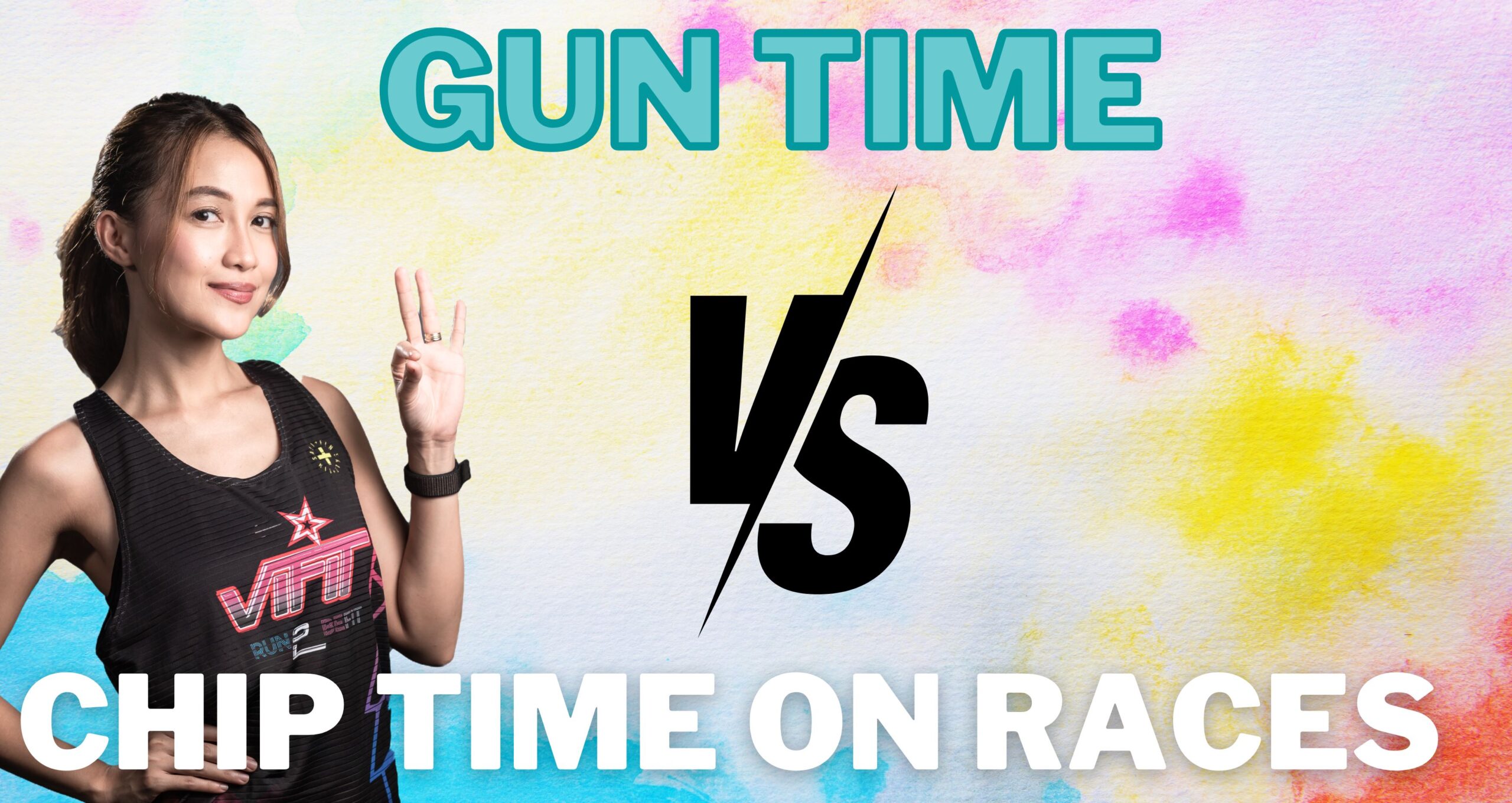Your cart is currently empty!

Chip Time vs. Gun Time in Marathons: What’s the Difference and Why It Matters?
/

For runners, every second counts. Whether you’re aiming for a personal best, a podium finish, or just crossing the finish line, how your race time is measured can make a big difference. In organized races, there are two main timing methods: chip time and gun time. While both are used in official results, they serve different purposes. Understanding the difference can help runners better interpret their performance and rankings.
What is Gun Time?
Gun time, also called official time, starts the moment the starting gun is fired. This means that your time begins counting even before you cross the starting line. In traditional races before electronic timing, gun time was the only way to record results.
Gun time is still used today, especially for elite runners who start at the front of the pack. Since these runners begin at the same time and place, gun time is the most practical way to determine race winners. The first person to physically cross the finish line is declared the champion, even if another runner had a faster net time but started farther back.
When is Gun Time Used?
- Determining the overall winners in a race
- Recognizing podium finishers in elite competitions
- Maintaining official race records in professional events
Gun time is typically displayed on race clocks along the course, but for the majority of runners, this timing method does not reflect their actual race performance.
What is Chip Time?
Chip time, also known as net time, provides a more accurate measure of a runner’s actual race duration. It starts when a runner crosses the start line and stops when they cross the finish line. This method eliminates the delay caused by crowded starts, where runners may take several minutes just to reach the start line.
Chip timing is made possible through RFID (radio-frequency identification) chips embedded in race bibs, shoes, or wristbands. These chips communicate with sensors at timing mats placed at key points along the course, ensuring an accurate record of when a runner starts and finishes.
When is Chip Time Used?
- Measuring a runner’s actual race performance
- Determining personal records (PRs)
- Ranking participants in age-group categories
- Assigning fair results in large races with wave starts
Most marathon results list both gun time and chip time, with rankings based on chip time for age-group and personal records. However, official podium placements still rely on gun time.
Why the Difference Matters
For recreational runners, chip time is the most meaningful way to measure progress. If you start near the back of a crowded race, your gun time might be several minutes longer than your actual run. For example, in large races like the Boston Marathon or New York City Marathon, thousands of runners start in different waves. Without chip timing, slower runners would be unfairly penalized simply for starting later.
For elite runners, however, gun time remains the standard. Since they start at the front, their chip and gun times are usually identical or very close. In professional races, the first athlete to physically cross the finish line is declared the winner, making gun time the decisive factor.
Aisah Reyes’ Experience in the 2025 Bulacan Half Marathon
The difference between gun time and chip time can be frustrating, especially for competitive runners. Aisah Reyes experienced this firsthand in the 2025 Bulacan Half Marathon.
Despite being placed in the second wave, which started five minutes after the gun start, Aisah ran an incredible race. She knew it would be impossible to make up for those lost five minutes. However, she still managed to be listed as the third runner to cross the finish line in the overall women’s category.
Unfortunately, because podium rankings were based on gun time, Aisah did not officially place in the top three. Had the race results been determined by chip time, or based on the 1st to cross the finish line, she would have rightfully secured a podium finish.
Her experience highlights the challenges of using gun time in races with wave starts. It underscores why many runners prefer chip time—it reflects actual performance rather than when a runner happened to start.
How to Use Chip and Gun Time in Your Race Strategy
- Start Position Matters – If you’re aiming for a competitive placement, try to start as close to the front as possible.
- Focus on Chip Time for PRs – If you’re running for personal improvement, use chip time to gauge your progress.
- Track Both Times – Some runners like to compare chip time vs. gun time to see how much time they lost at the start.
Final Thoughts
Both chip time and gun time play important roles in race timing. While gun time determines official winners, chip time offers a fair measure of an individual’s true performance. Understanding these differences helps runners better analyze their results, set realistic goals, and enjoy the race experience. Whether you’re chasing a PR or just enjoying the journey, what really matters is crossing that finish line—however the clock measures it!
